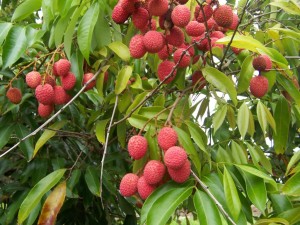Economic importance of Litchi chinensis

Family: Sapindaceae
Genus: Litchi
Species: L. chinensis
Common name: Litchi
Origin: China
- Description: It is a medium-sized evergreen tree, with alternate pinnate leaves, with 2-8 lateral leaflets; the terminal leaflet is absent. The newly emerging young leaves are a bright coppery red at first, before turning green as they expand to full size. The flowers are small, greenish-white or yellowish-white, produced in panicles. The fruit is a drupe. The edible flesh consists of a highly developed aril enveloping the seed. The centre contains a single glossy brown nut-like seed.
Economic Importance:
- Fleshy, sweet arils covering the seeds are delicious; they are eaten as such or canned. Dried fruits, Litchi nuts are exported from China. The flesh of dried litchis is eaten like raisins. Chinese people enjoy using the dried flesh in their tea as a sweetener in place of sugar. To a small extent, litchis are also spiced or pickled, or made into sauce, preserves or wine. Litchi seeds are used as anodyne in neuralgic disorders and orchitis.
- Ingested in moderate amounts, the litchi is said to relieve coughing and to have a beneficial effect on tumours and enlargements of the glands. A tea of the fruit peel is taken to overcome smallpox eruptions and diarrhoea. In India, the seeds are powdered and, because of their astringency, administered in intestinal troubles, and they have the reputation there, as in China, of relieving neuralgic pains. Decoctions of the root, bark and flowers are gargled to alleviate ailments of the throat.
- Bark contains tannin.
One Comment




thanks for the information